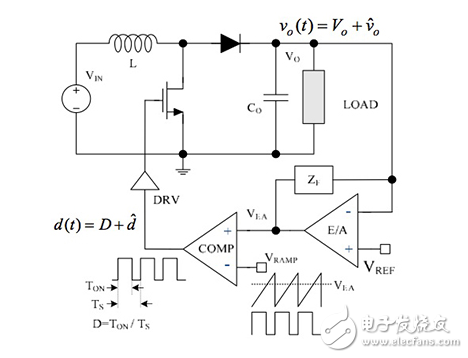
资料下载

了解开关稳压器控制回路响应
了解开关稳压器控制回路响应
开关DC-DC电压调节器(“开关稳压器”)依赖于一个封闭的反馈控制回路,以确保所需的电压和电流输出保持在不同的负载条件下。该控制回路的性能影响电源的关键性能参数,包括线路和负载调节,稳定性和动态响应。
工程师可以量化的控制回路的性能,通过测量在宽范围的频率的电压调节器的频率响应。的频率响应,然后可以“调整”通过将补偿网络到电路中。如果工作做得好,最终的结果是一个开关稳压器的稳定性,在较宽的频率范围内却没有补偿,动态响应较差。
本文介绍了开关稳压器的控制回路的基本原理,然后着眼于一些精心设计的模块化开关控制器和调节器,可作为高性能电源的基础上的一些例子。

The voltage regulator control loop
Feedback control loops are simple concepts. The purpose of a control loop is to constrain a system variable (for example, an output) such that it is maintained at a desired value. The system variable is constantly monitored and compared with a reference value, which is equal to the desired output. The error signal (the difference between the desired value and the actual output) is then used to adjust the system variable to bring it back into line.
In a switching regulator the system variable is voltage (and/or current) which is compared with a reference value set by the circuit designer. The output from the error amplifier (the error signal) is then fed into a comparator that adjusts the duty cycle of the switching transistor. The duty cycle is proportional to the output voltage. Figure 1 shows a simplified schematic of the feedback loop for a step-up (“boost”) switching regulator.
下载资料需要登录,并消耗一定积分。
声明:本文内容及配图由入驻作者撰写或者入驻合作网站授权转载。文章观点仅代表作者本人,不代表电子发烧友网立场。文章及其配图仅供工程师学习之用,如有内容侵权或者其他违规问题,请联系本站处理。 举报投诉
- 相关下载
- 相关文章




